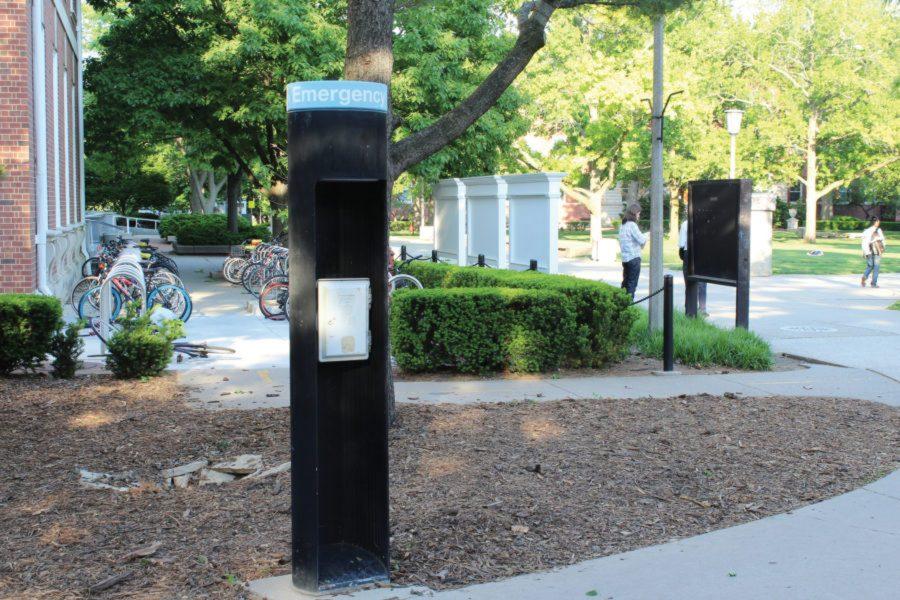Ohio State stabbing raises questions about UI’s emergency response plans
Nov 29, 2016
Chancellor Robert Jones commended the University of Illinois Police Department’s emergency response plans as the police at Ohio State University continued to investigate a stabbing on the campus Monday.
An Ohio State student drove his car into a crowd of students before stabbing people with a butcher knife, injuring 11 altogether. A police officer shot and killed suspect Abdul Razak Ali Artan less than a minute after the attack began, prompting praise from Ohio State President Michael Drake at a press conference.
Jones expressed confidence in the University’s officers to handle a similar situation “as thoroughly and fast as they did.”
“They stopped asking presidents what is the one thing that keeps you up at night because folks, this is it,” Jones said at Monday’s Senate Executive Committee meeting. “I spoke with the chief and we just hope this never happens on this campus. We are really saddened by this.”
Jones started his term in September and has made no revisions to the University’s emergency plans, saying he was “very pleased” to see the University and its police department has “sustainable and comprehensive emergency processes in place.”
Get The Daily Illini in your inbox!
UIPD has an emergency campus planning department with four employees in addition to officers in other departments who train to handle emergency situations, according to UIPD spokesman Pat Wade. The department coordinates and trains uniformly with the Champaign and Urbana police departments and the Champaign County Sheriff’s Office so each group will be prepared to work together.
All police departments, fire departments and emergency medical services who would respond to a campus emergency participate in an active shooter simulation at least once per year. An active shooter scenario was held in September with scenarios of a shooter on the Main Quad and a shooter at Parkland College.
“It shows us, A, how ready we are and, B, it also exposes some weaknesses in our plan,” Wade said. “We try to identify those and fix those so it’s not something that comes up next time. We feel confident that we have pretty good emergency response plans. We plan for it every day and train for it every day; we just hope the day never comes (that we) have to use it.”
One obstacle for the UIPD is how spread out campus is, Wade said. The department publishes on its website more than 350 building emergency action plans, which include maps showing exits, storm refuge areas, areas of rescue assistance and evacuation assembly areas. And there are still more buildings to add.
Ohio State Emergency Management tweeted updates similar to information published with UIUC Illini Alerts. Each student with an Illinois email address receives email alerts and students who provide phone numbers receive text message alerts, Wade said. Students can choose to opt out from signing up for text message alerts, and those who opted out but change their minds can sign up online.
UIPD also shares information for students and faculty to prepare, including the strategy run, hide, fight. Students are encouraged to run if it is safely possible, hide if unable to run and fight if it is safe to do so.
Students should receive emergency situation plans each semester. Instructors are required to either include emergency information in their syllabus, give a one minute speech of plans or show a video on emergency planning, said Robin Kaler, campus spokeswoman. But the information does not always reach students.
“If that’s been (students’) experience then we need to tighten up and remind our instructors that it is part of responsibility and obligation because we have things posted in classrooms; every building has a plan,” Jones said. “You can never communicate enough to remind people because we get comfortable and when instances like this occurs, it reminds you you’re not as aware as you need to be.”
Jones said he may send an email this week to instructors to remind them to share emergency plans with their students.
UIPD looks at actual emergency situations to adjust its own plans, and Wade said the department will analyze the attack at Ohio State within the coming days. The University will continue to try and improve its own plans with hopes that a similar tragedy will not happen here.
Megan Jones contributed to this report.






